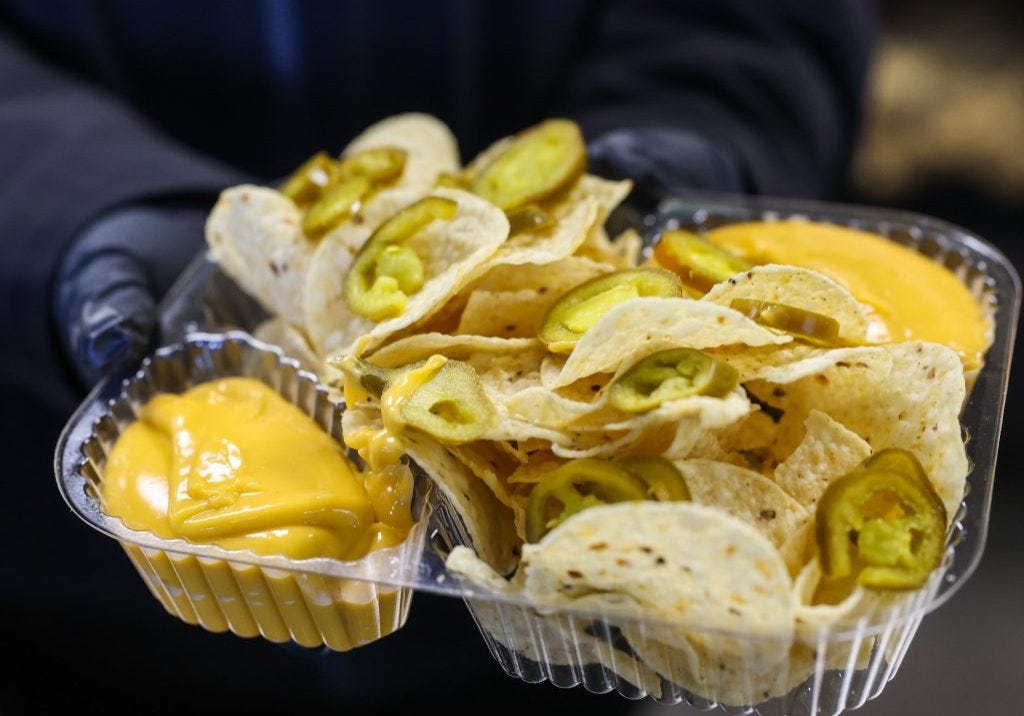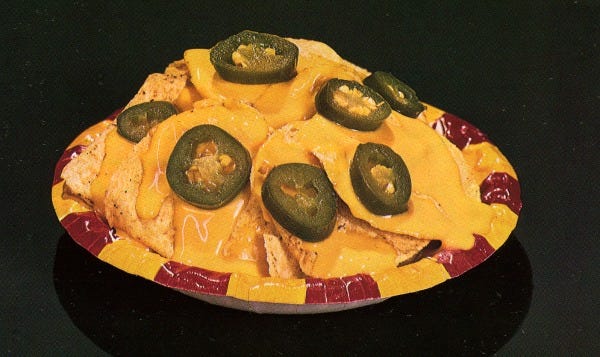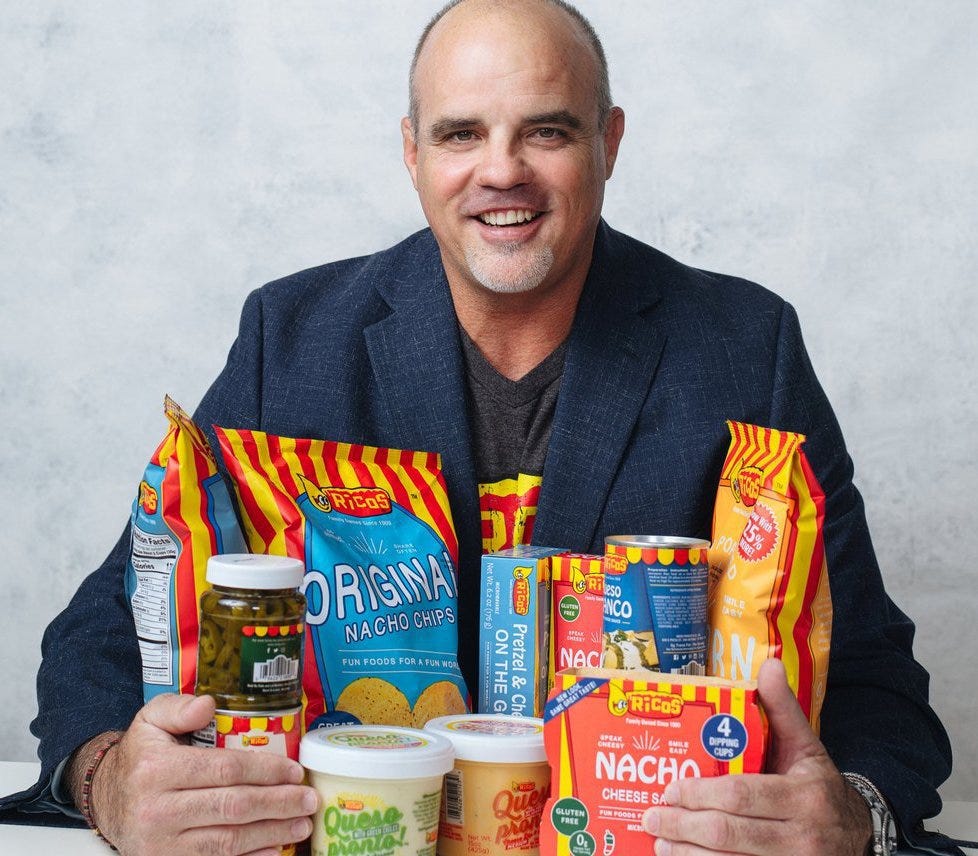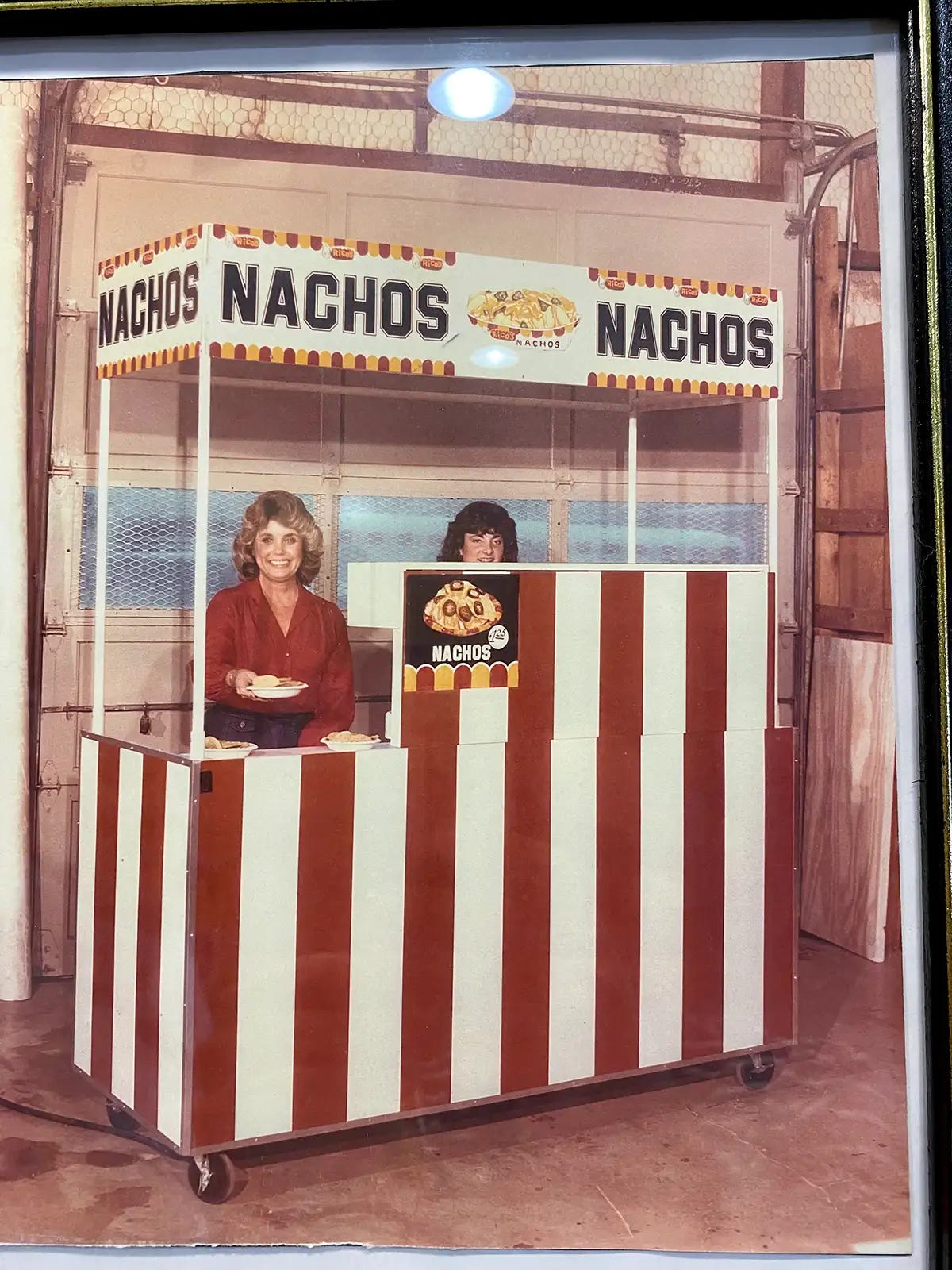How Ricos Dominates the Stadium Nacho
Those gooey, cheesy, jalapeño-topped chips you grab at the ballpark probably come from the Liberto family’s longtime business.

Imagine your next trip out to see a ball game. It’s a beautiful summer day, the sun is shining, the crowd is buzzing, and you’re standing in line at the concession stand. You glance at the menu—hot dogs, popcorn, pretzels, and of course, nachos. But these aren’t just any nachos. These are stadium nachos. Chances are, those gooey, cheesy, jalapeño-topped chips you grab at the ballpark are from one company that has pretty much cornered the market. How did this happen? How does one company dominate the stadium nacho scene?
An Introduction to Market Structures
Before we head out to the ball game, let’s talk market structures. Economists categorize markets based on the number of firms and the types of products they sell. It helps us understand how businesses compete and how prices are set. There are four main market structures you should know: perfect competition, monopolistic competition, oligopoly, and monopoly. Each of these has its own unique characteristics and implications for consumers and businesses.
First up, we have perfect competition. Imagine a market with numerous small firms, all selling identical products. No single firm can influence the market price because there’s just so much competition. This is the idealized market structure you read about in textbooks, but it’s hard to find in the real world.
Next is monopolistic competition. Here, a lot of firms sell similar but not identical products. Each business has some degree of market power, but there’s still plenty of competition to keep prices low. Think about the variety of restaurants, clothing brands, and, at first glance, those stadium concession stands.
Then there’s the oligopoly. In this market structure, a few large firms dominate the market. They may sell identical products or they may try to differentiate their products, but regardless, each firm’s actions significantly impact the others. Classic examples include the automobile and airline industries.
And finally, we have the monopoly. This is where a single firm controls the entire market for a product with no close substitutes. Monopolies can set prices and output levels based on customer demand without worrying about competitors. Utilities and patented pharmaceuticals are typical examples.
So, where do stadium nachos fit into this? At first glance, you might think they’re part of a monopolistically competitive market because there are so many snacks to choose from at the concession stands. That’s true when you’re at the ballpark, but what about the concession manager who is picking products to sell at each stand?
When we look closer, we see that the company behind those nachos, Ricos, has significant market power in this niche market. They aren’t a true monopoly—there are other brands selling stadium nachos—but Ricos has developed a scale and brand recognition that allows them to dominate the stadium nacho scene.

The Birth of a Natural Monopoly
Now, let’s get into the story of Ricos and the Liberto family. They’re the masterminds behind the nachos you snack on at most ballparks. Ricos is a family-owned business from San Antonio, Texas, and they revolutionized the stadium nacho game. In the mid-1970s, Frank Liberto had a brilliant idea: transform a traditional Mexican appetizer into a quick-serve concession stand staple to be sold at Texas Rangers baseball games.
Initially, the Rangers were hesitant to put nachos on their menu. They had a fantastic markup with popcorn, and they didn’t want to introduce a product that might eat into those profits. Frank Liberto had to work hard to convince them otherwise. He knew that for nachos to be successful, they needed to be cheap to make but sold at a price that ensured a high profit margin.
But it wasn’t just about creating a tasty recipe. The real innovation was in the production and delivery process. Liberto went to great lengths to make this happen. He sourced ingredients directly, even driving down to Mexico to secure jalapeños and working closely with dairy producers to perfect the cheese sauce. And here’s where the concept of economies of scale comes into play. Economies of scale occur when a firm’s average costs decrease as its output increases. In simpler terms, the more you produce, the cheaper it gets to make each unit.
This meant refining the production of nacho cheese sauce to a level of efficiency that smaller competitors couldn’t match. They developed a proprietary cheese sauce that could be heated and served quickly, which was crucial for the fast-paced environment of stadium concessions. By producing and distributing cheese sauce on a large scale, Ricos reduced its per-unit costs, allowing it to offer competitive prices while maintaining high profit margins.

Strategic Moves to Maintain Market Power
Economies of scale were a big part of how Ricos got started, but how did they stay on top for so long? The answer lies in some very strategic business practices that have kept them ahead of the game for decades. Ricos secured deals with major stadiums and theater chains that ensured their products were the go-to choice for concession stands. These exclusive agreements often come with long-term commitments, effectively locking out competitors.
Take the Texas Rangers, for instance. Ricos negotiated a partial agreement that allowed the Rangers to use Tostitos for the chips while locking down Ricos for their jalapeños and cheese sauce. Whether it’s an exclusive agreement or a partial agreement, these long-term contracts have made it tough for any other brand to break into these venues. Because of these deals, you’re likely thinking of Ricos when you think of stadium nachos.
But Ricos didn’t stop with exclusive agreements. They’ve also got meticulous control over their supply chain. The company sources jalapeños directly from Mexico and partners with dairy producers to create their unique cheese sauce. By controlling these key ingredients, Ricos ensures consistency and reliability, which is crucial for maintaining their contracts with large venues. Imagine if the quality of the nachos varied from game to game; fans wouldn’t be as loyal. But with Ricos, you know what you’re getting every time.
Speaking of loyalty, Ricos has built a strong brand over the decades. Fans have come to associate the nachos they enjoy at the ballpark with the Ricos product. This brand recognition isn’t just limited to stadiums—it extends to movie theaters and other venues as well. When you think of cheesy, delicious nachos, you think of Ricos. This kind of market penetration makes it discouraging for new entrants to even try to compete.
So, while economies of scale helped Ricos establish their position, it’s these strategic moves—exclusive contracts, supply chain control, and strong brand recognition—that have maintained their dominance.
The Ballpark Experience: More Than Just a Snack
Let’s switch gears a bit and look at things from the perspective of the average baseball fan. For most of us, the sight of nachos at the concession stand is a comforting constant. Whether you're at a local minor league game or a major league matchup, those nachos are always there, offering the same gooey, cheesy satisfaction. This consistency is a big part of what makes Ricos’ story so fascinating from an economic perspective. They aren’t necessarily the best nachos you’ve ever had, but there’s something comforting about them—something reliable.
Inside the stadium, snacks like nachos exist in what economists call a monopolistically competitive market. This means that fans have plenty of choices: hot dogs, popcorn, pretzels, and more. Each vendor is competing for a share of the fan’s appetite, and they differentiate their products through taste, convenience, and even nostalgia.
However, within this competitive snack framework, Ricos has managed to carve out a sort of monopoly over the nacho segment. Even though there are many different snacks to choose from, when it comes to nachos, Ricos stands out as the dominant player. The concession stands are a unique blend of competition and monopoly power that makes the economics of stadium nachos so interesting.

The Impact on Consumers
Typically, when we think of a monopoly, we picture high prices and limited output. But with Ricos, it’s a bit different. On the positive side, Ricos’ economies of scale mean that fans can enjoy a consistent and relatively affordable product across different venues. Their control over quality and supply ensures that the nachos meet a certain standard, adding to the overall game-day experience. The combination of chips, cheese, and jalapeños has remained a comforting constant over the years.
But here’s where it gets interesting. Even though Ricos has significant monopoly power as a supplier, we don’t see the usual drawbacks of a monopoly—like high prices—at the consumer level. Stadium nachos are often some of the cheapest items you can enjoy at the ballpark. So, what’s going on?
When stadiums are looking for nacho suppliers, Ricos is the main game in town. They’ve locked in those exclusive contracts and built a strong brand. But the final product, those nachos you buy at the concession stand, is sold in a monopolistically competitive market. This means that while Ricos dominates as a supplier, the price you pay is influenced by the competition among various concession stand items.
In other words, even though Ricos has significant control over the nacho supply, they can't jack up prices too much because fans have plenty of other snacks to choose from. This competition among different concession items keeps the price of nachos in check, even though they’re coming from a dominant supplier.
Final Thoughts
So, the next time you’re at a game, savoring that tray of nachos, take a moment to think about their journey. From a small family business in San Antonio to a nationwide concession staple, Ricos nachos have become a beloved part of the ballpark experience. The story of Ricos and its stadium nachos offers a real-life example of how economic concepts shape the products we enjoy.
Thank you for reading Monday Morning Economist! This is a free weekly newsletter that explores the economics behind pop culture and current events. This newsletter lands in the inbox of more than 4,500 subscribers every week! You can support this newsletter by sharing this free post or becoming a paid supporter:
When stadium nachos were introduced in 1976, they soon became the park's most popular snack with fully 40% of patrons buying them [Masehd]
That season Arlington Stadium sold Ricos’ nachos they made over $800,000 in sales while popcorn, which previously had the highest sales, only sold a brought in revenue of $85,000 [Smithsonian Magazine]
Chase Field in Arizona is the most affordable baseball venue, with a family of four spending approximately $170.09 on parking, tickets, merchandise, and concessions [USA Today]
A 100 mg serving of fast food nachos with cheese contains about 343 calories [USDA]






Go figure, the two ballparks that don't serve nachos are the ones with the most insufferable fans (Philly fans working hard to come in 3rd). Coincidence??
You can also buy Rico’s at your grocery store. The kids love it. LOL!